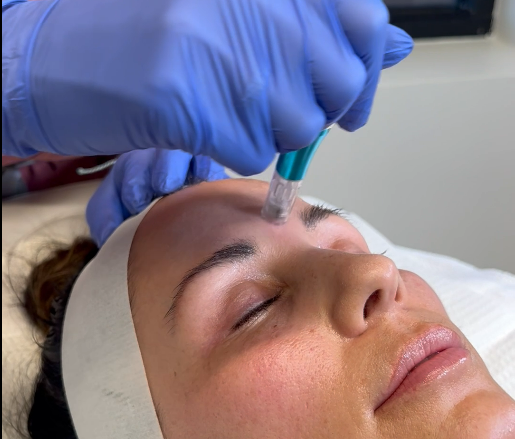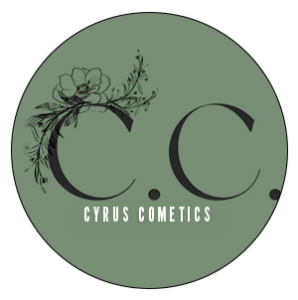Introduction
Vampire facials have become increasingly popular in recent years, praised for its rejuvenating effects on the skin. However, the increasing demand has also resulted in more unlicensed providers offering these treatments. Understanding the risks associated with receiving a vampire facial from an unlicensed provider is crucial for anyone considering this procedure.
Understanding Vampire Facials

A Vampire facial is Microneedling with PRP (Platelet Rich Plasma). Microneedling involves using a device with fine, sterile needles that create thousands of tiny, controlled micro-channels on the skin’s surface that brings about an intense collagen producing environment. Your Nurse Practitioner then gently massages PRP into these channels that improves the efficacy of the microneedling alone. The small channels produced by the micro-needles create a pathway to the deep layers of your skin. In addition to the collagen production, the procedure reduces fine lines, and improves overall skin texture. The benefits are significant when performed by a trained professional. As efficacious as this procedure is, it can be very dangerous when provided by an unlicensed person.
Importance of Licensed Providers and Facilities
Using a licensed provider in a licensed facility is essential to ensure the procedure’s safety and effectiveness. Licensed providers have undergone rigorous training and adhere to strict sterility and regulatory standards. Licensed practitioners are required to complete specific nursing and medical training programs. These programs cover anatomy, sterile techniques, injection methods, and emergency procedures that ensure your provider has the necessary qualifications to reduce the likelihood of complications.
Regulatory bodies, such as the California Board of Nursing and the California Medical Board establish safety standards that licensed providers must follow. Facility licensing bodies standardize the use of sterile equipment, proper handling of blood products, and adherence to hygiene protocols. Compliance with these standards helps protect patients from infections, health risks and holds the provider, whether a Nurse Practitioner, Physician Assistant (PA) or physician, accountable for their process of care. When you opt for a vampire facial from an unlicensed provider, you expose yourself to numerous risks. These risks stem from a lack of proper training, inadequate knowledge of medical protocols, and potentially unsanitary practices. Health risks include infections, allergic reactions, and improper administration of the treatment. Infections can occur if the equipment is not sterile or if the provider does not follow proper hygiene practices. Allergic reactions and complications can arise from incorrect handling of the PRP or reusing equipment. It should be noted that the highest safety standards dictate not reusing needles or blood containing tubes.
The quality of the results can also be severely compromised when the procedure is performed by someone without proper credentials. Patients may experience uneven skin texture, prolonged bruising, or minimal improvement in their skin condition.
Recent Case of Unlicensed Person Causing HIV Infections
A recent case was the topic of an article in “Medscape Nurses” May 2nd edition of Medical News:
“At least three clients of an unlicensed spa in New Mexico contracted HIV after receiving platelet-rich plasma (PRP) microneedling facials, according to an investigation by the US Centers for Disease Control and Prevention (CDC).
The investigation, spanning 5 years with parts of it still ongoing, has resulted in the closure of the spa and is raising questions about public safety in cosmetic clinics.
Though transmission of HIV by unsterile injection practices is a known risk, this is the first time it has been linked to cosmetic injection services, said Anna Stadelman-Behar, PhD, MPH, an epidemiologist at the CDC’s Epidemic Intelligence Service.”
Several individuals were infected with HIV and had no known risk factors which, initially lead to the investigation. According to the article, investigators discovered several troubling lapses in basic medical and sterility process:
- On a kitchen counter, a centrifuge, a heating dry bath, and a rack of unlabeled tubes containing blood.
- In a refrigerator, unlabeled tubes of blood and medical injectables including Botox and lidocaine stored along with food.
- Unwrapped syringes in drawers, on counters, and discarded in regular trash cans
- No autoclave for steam sterilization on the premises.
- Only surface cleaning for procedure equipment with chloride disinfecting spray and benzalkonium chloride disinfecting wipes after each client visit.
- Disposable electric desiccator tips, meant to be used once, cleaned only by alcohol immersion to be reused.
- The spa’s owner operated without appropriate licenses at multiple locations and did not have an appointment scheduling system that stored client contact information.
Checking Certifications
Look for certifications from recognized boards organizations. Providers should display their certifications prominently in their office or be able to provide proof upon request. A lack of verifiable credentials or reluctance to discuss their training and experience should raise concerns. The National Provider Database also maintains information about providers and complaints the provider may be facing. Be cautious of providers who offer significantly lower prices than others or operate in non-medical settings. A provider should be able to confidently describe the procedure and its risks and benefits.
Conclusion
Although vampire facials can provide significant skin benefits, it is crucial to ensure that the procedure is performed by a licensed and qualified provider. The risks associated with unlicensed providers outweigh the potential benefits. Always verify the credentials of your provider and prioritize your health and safety.
FAQs
What are the common side effects of a vampire facial?
Common side effects include redness, swelling, and bruising at the injection site, which usually resolve within a few days.
How can I ensure that my provider is licensed?
To ensure your provider is licensed, check for certifications from recognized medical boards and ask to see their credentials. Additionally, research their background and read reviews from previous clients.
What should I do if I experience complications after a vampire facial?
If you experience severe pain, signs of infection, or other unusual symptoms, contact your provider immediately. Seek medical attention if necessary.
Are vampire facials safe for all skin types?
While generally safe, it is crucial to consult with a qualified provider to determine if this treatment is suitable for your specific skin type and condition.
How long do the results of a vampire facial last?
The results typically last between six months to a year, depending on individual skin conditions and follow-up care.

